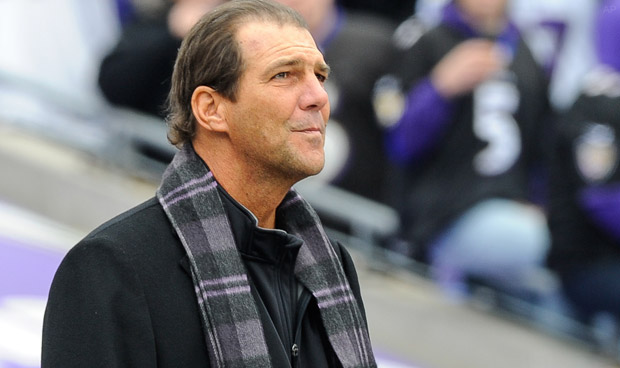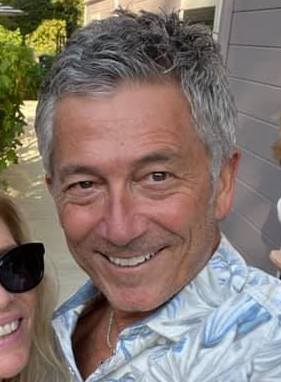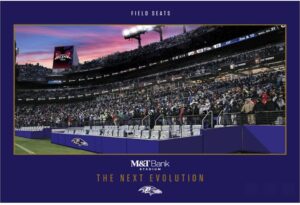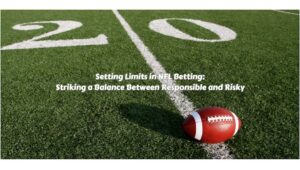It’s been a long time coming.
It started on February 3, 2013. That’s the night when the lights went out in New Orleans.
It was a happy ending that evening, but the Super Bowl 47 win, set in motion a gradual decaying of a winning franchise. It was then that the Ravens empire began to fall.
Throughout the 2012 playoffs, Joe Flacco performed like he never had before or since. He was magnificent and for once, he carried the team on his back. Ever since he’s weighed upon the back of the organization with the league’s heaviest cap figure while performing like an average quarterback.
Give Flacco credit. He bet on himself, rolled the dice and performed under pressure. The Super Bowl MVP cashed in, taking advantage of an organization intoxicated by its second Lombardi Trophy and the thought of a long-time franchise quarterback.
Meanwhile there was a shift in power. When John Harbaugh hoisted Silver Betty as the cascade of purple, gold and silver confetti fell from the rafters of the Mercedes-Benz Superdome, his clout within team headquarters skyrocketed. The victory, for all intents and purposes, enabled Harbaugh to shape the team the way he wanted.
Alpha males that dominated and led the Ravens locker room moved on. Ray Lewis retired. Ed Reed wasn’t re-signed. Anquan Boldin was traded. Bernard Pollard was released. Nearly overnight, the swagger that once defined the Baltimore Ravens had vanished.
Good character in players became a highly-desired trait, seemingly trumping on-field accomplishments. This shift in personnel direction was exacerbated by the Ray Rice elevator incident, a public relations nightmare for the team, worsened by the club’s amateurish handling of its sordid details.
THE DRAFT
The secret to the Ravens success up to and including Super Bowl 47 was its prowess during NFL Draft weekend. Ozzie Newsome and his staff once possessed an uncanny knack for producing star players. In the team’s war room, the buck stopped at Ozzie’s desk. Even dating back to his initial days as the personnel head honcho, Newsome ignored overtures from team owner Art Modell to draft Lawrence Phillips and instead selected Jonathan Ogden.
We all know how that story ended.
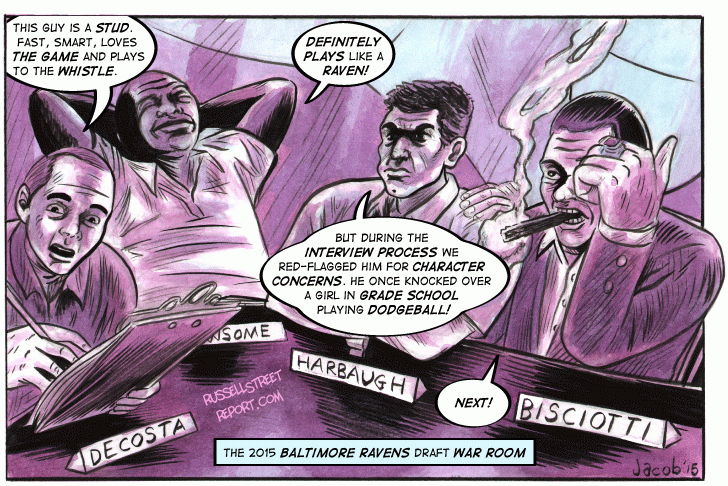
The draft replenishes a football team. It provides youthful, less expensive talent that when productive, allows an organization to retain its own free agents and augment their roster by acquiring complementary free agents from other teams. Successful drafts breathe new life into the salary cap.
But since 2013, the Ravens have failed to acquire impact players through the draft. In fact, over the course of the last five NFL Drafts, the Ravens have selected just two Pro Bowl players: C.J. Mosley and Kyle Juszczyk. Forty-six players have been selected of which only 29 remain.
More disturbing is the team’s inability to find impact players in the first 3 rounds. Mosley, 2014’s first-round pick, while a good player, rarely makes game-altering plays. Juszczyk was a fourth-round pick in 2013, but plays a position that is a dying breed. Fullback has become so devalued that the Ravens now use a reserve defensive lineman (Patrick Ricard) in that role.
Of the 16 players drafted in the top 3 rounds since SB 47, only four contribute in a meaningful way: Marlon Humphrey; Ronnie Stanley; Mosley; Brandon Williams.
The balance of those 16 picks includes busts such as: Matt Elam; Arthur Brown; Terrence Brooks; Breshad Perriman; Maxx Williams; Kamalei Correa; and Bronson Kaufusi. That’s a whopping 44% of the Ravens picks in the first three rounds since the Super Bowl. The jury is still out on the other five picks in that merry band of 16 and includes: Tyus Bowser; Chris Wormley; Tim Williams; Carl Davis; and the departed Tim Jerningan.
Failure to produce during the draft has forced the Ravens into free agency and that places pressure on the cap. If Perriman played to the level of his draft status, there would be no need for Jeremy Maclin. If Elam and Brooks had provided commensurate value, there would be no need for Eric Weddle and Tony Jefferson. Those three free agent signings carry a cumulative cap number of $24.25M in 2018. That’s money that could have been used to retain Kelechi Osemele and Rick Wagner. Imagine how that line would look in front of Flacco.
Oh, and they’d save $5M in cap space on Austin Howard in 2018 to boot.
THE FRONT OFFICE
For years the Ravens ivory tower has been considered to be among the league’s best, if not THE best. But in recent years, they seem to be resting on their laurels. Poor drafts have placed pressure upon the salary cap, as have bad contracts to aging veterans who failed to perform as expected. Making matters worse, the front office seems stuck in neutral. They live and breathe by tried and true credos like, “right player, right price” and “best player available”.
But you have to wonder if such credos have outlived their usefulness.
In an excellent article from The Ringer titled, “How the Rising Salary Cap Explains the NFL Playoffs”, Kevin Clark describes how teams have successfully used swelling cap numbers since 2011 to their advantage in free agency.
There was once a day when the big spenders in free agency, those teams that won the offseason Super Bowls, were generally desperate teams. They reached. They overpaid and it didn’t make a difference. The Vinny Cerrato-led Washington Redskins of the late 90’s, early 2000’s, come to mind.
But things have changed.
“Multiple league executives, coaches, and experts told me that it is changing the way teams are built at an unprecedented pace and turned free agency from a last resort into a legitimate team-building strategy, like it has in other sports.” ~ Kevin Clark, The Ringer
Six of the top 10 spenders in free agency this season have made the playoffs. The Jaguars, who hadn’t been to the postseason since Harbaugh was a rookie coach, spent $20 million more than any other team.
To their credit, the Ravens spend to the cap but their spending is questionable. This season they dropped a 5-year, $52.5M contract on a player (Brandon Williams) who doesn’t dominate, doesn’t touch the ball and doesn’t touch the quarterback. They spent another $33M on a safety (Tony Jefferson) whose production fell off markedly from 2016 and who was used in a way that hardly befits his skill set.
Is “wrong player, wrong price” the team’s newest credo?
Williams is a nice player, don’t get me wrong. But the Ravens have forever had a knack of finding big guys in the trenches on defense in the draft (Williams was a 3rd round pick) as well as undrafted free agents like Michael Pierce who actually graded out higher than Williams this past season.
Why not invest your cap dollars in areas where you aren’t as resourceful in the draft (wide receiver) and let the draft fill in for losses like Williams, assuming the Ravens didn’t pony up?
As for the “Best Player Available”, it’s an approach that HAS produced results for the Ravens. In 2001, they really didn’t need a tight end but picked Todd Heap. In 2002, safety wasn’t their biggest need but Ozzie called the name of Ed Reed in round 1. Both players were the highest on the Ravens draft board and both worked out pretty well.
But in today’s NFL and given the Ravens weaknesses, maybe need should factor in a bit more heavily.
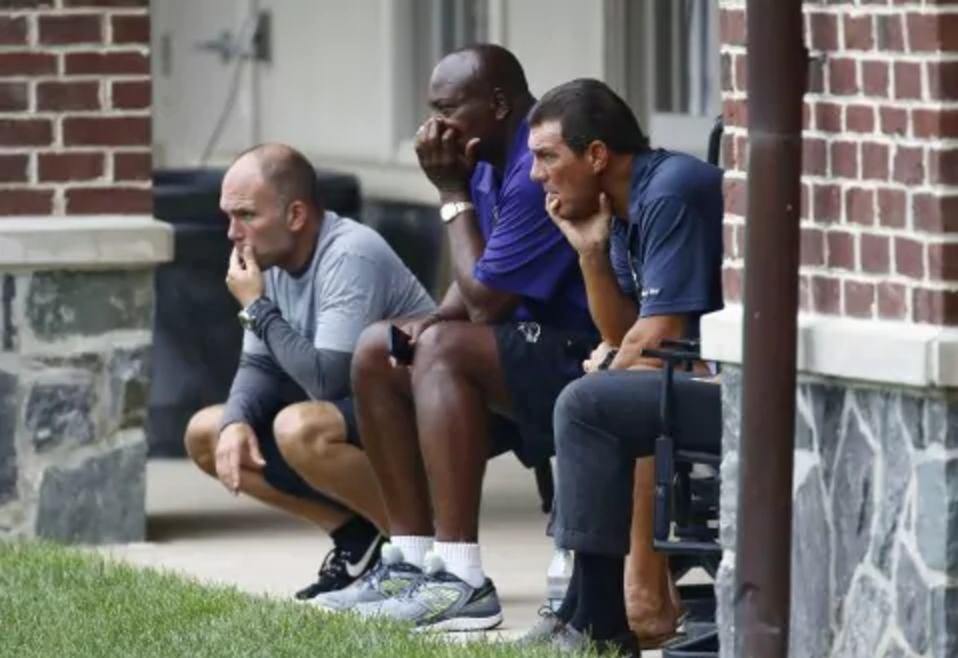
During the 2017 NFL Draft, the Ravens used their first four picks on defense. O.J. Howard was still on the board when the Ravens pick Marlon Humphrey instead. No one will question this move in the future as Humphrey has the makings of a future star.
But needing a wide receiver, as they annually do, the Ravens missed on two WR prospects that they liked. They could have had one, if not both.
In round 2 they passed on Juju Smith Schuster, opting instead for Tyus Bowser. The Ravens liked Cooper Kupp and were ready to make that pick at No. 74 but the Rams grabbed him with the 69th overall pick.
The Ravens needed a receiver. They liked the receiver, yet they didn’t use any draft capital to move up and get their guy. Let me put this in perspective. To move up to 68 and get Kupp, it would have cost the Ravens their No. 74 overall pick and a fifth-round pick. That 5th-rounder became Jermaine Eluemunor, who judging from his rookie season, looks to be the next Ramon Harewood.
Can we change the credo to, “Best Player Available Based Upon Our Biggest Needs”?
THE FRANCHISE QB
Had the Ravens known that Joe Flacco would become an average quarterback with an elite W-2, they obviously wouldn’t have given him the then record-setting contract of 2013. Since signing that contract, Flacco’s average ranking among NFL starters per Pro Football Focus is 23. Not performing to the level of his contract places additional burden on the cap.
In fairness to Flacco, he has never had any consistency at the coaching position of offensive coordinator. And in 2017, the team saddled him with a substandard group of pass catchers. One might think that the Ravens would surround Flacco with better playmakers in order to get the most out of their investment in him. That said, some might argue that franchise quarterbacks armed with Flacco’s pay grade should make those receivers around him better.
Be that as it may, the Ravens have failed Flacco as much as he has failed the team.
It stands to reason, that the organization should put Flacco in a position to succeed and surround him with quality, complementary talent. A more prolific offense places pressure on opponents while easing the burden on the defense. But not only have the Ravens failed to provide Flacco with a proper arsenal, they’ve jammed him into a system that doesn’t match up with his skill set.
The Ravens run a west coast offense (“WCO”) which is designed to spread the field and allow a short-passing game to be an extension of a team’s rushing attack. Slants, drags and crossers are an integral part of play design and proper execution requires a quarterback who is mobile, accurate to the point of maximizing yards-after-catch, makes pre-snap adjustments, reads quickly through his progressions and throws his receivers open.
Does any of that sound like Joe Flacco to you?
In a league, wherein the number of defensive pass interference calls and defensive holding calls have risen 129% since 2011, the Ravens morph their flame throwing quarterback into Mr. Dink-and-Dunk. According to Pro Football Focus’ analytics, Flacco’s “big-time throw percentage” was 2.8%. In other words, less than three-percent of his passes were considered deep strikes. That ranked 36th of the 40 quarterbacks evaluated by PFF. Instead of taking shots, the Ravens too often shot themselves in the foot. The Ravens regularly threw short of the sticks. It was maddening! And if you think that’s just an opinion, consider these two stats, courtesy of PFF:
• Flacco had the worst average yards per attempt among all starters: 5.7
• On third down Flacco threw deep just twice in 104 drop backs.
Why don’t the Ravens play to the strengths of their big-armed QB? Why not combine deep and mid-range passing with their power running? Why not stretch the field with speed? Why not utilize deep in-patterns, comebacks and outs. What happened to that mid-range seam route to the tight ends?
Sounds a bit like the offense that Cam Cameron used to run – the one that Jim Caldwell inherited in 2012. Oh, and by the way, the same offense that Joe Flacco ran through the 2012 playoffs, right into the SB MVP and a record-setting pay day.
Why pay a man all that money to continue to do what he did to land that contract, and then change the system used to achieve it all in the first place? It’s akin to taking a power hitter in baseball and shortening his stroke in order to boost his on base percentage after he won the home run hitting title.
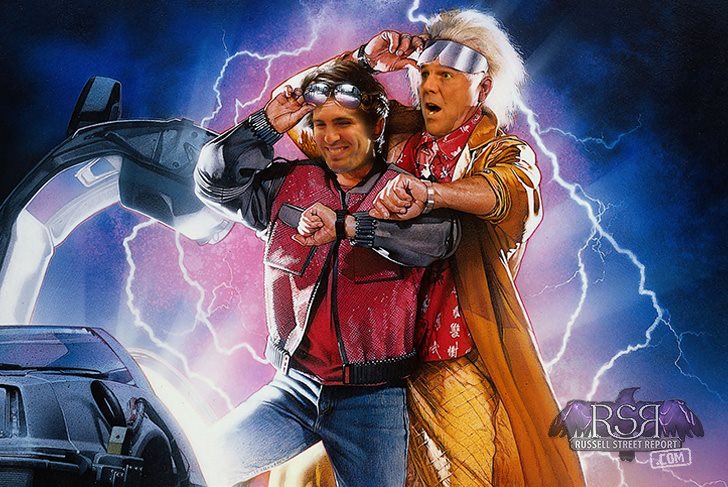
Instead of properly equipping Flacco schematically and with complementary personnel, the Ravens have disarmed their quarterback and in the process, wasted the prime years of his career, just like they wasted years of a great defense in the mid 2000’s by placing incompetent players behind center.
OWNERSHIP OF THE EMPIRE
Ravens owner Steve Bisciotti is the quintessential entrepreneur. He built a business from scratch, one that continues to thrive. He’s a self-made billionaire. Not many in the world can make such a claim and to do so, you must possess uncommon qualities.
And you generally think outside-the-box.
Bisciotti has always impressed me with the way he processes thoughts, a situation – even a problem. His words take you on a journey, one that you initially aren’t too sure about. But when the words have ended, and the thought complete, the journey makes sense and you can see his perspective with clarity. Soon his perspective becomes yours, because it’s better.
I don’t believe his gifts have been altered. I don’t believe they’ve abandoned him.
I do believe that he is mishandling the franchise as of late. I believe that like his head coach, loyalty has blurred the lines of effective decision making.
Having said that, none of us are privy to the information available to Bisciotti – information that may alter the perspective that we have without it, from the outside looking in. Maybe this is another of his journeys and maybe in time, we’ll find clarity and all of the things that he’s done or hasn’t done lately, may make more sense to us, long-term.
But his actions or inactions in the short-term, have proven costly.
THE FANS
It could be argued that Ravens fans are spoiled. We’ve enjoyed great success, particularly when you consider the relative youthfulness of the franchise. Ten trips to the postseason; four conference championships; two Lombardi Trophies. When you taste success, you expect more. You don’t expect mediocrity and for five years, that’s exactly where the Ravens have lived – Mediocreville.
Making matters worse is the way they’ve achieved this mediocre branding. The Ravens lack an identity. They were once bullies, the defensively dominant team that other teams hated to see. As fans, we loved that knowledge. We wore it as a badge. The team’s identity was a perfect DNA match for the city it represented.
Those days are long gone. Today we’re left with a team that not only lacks defensive dominance, they are relatively passive with regular fourth quarter leaks. Offensively, they seem as inventive as a Polaroid picture. Add it up and you have a team that is a melting mess of homogenized nothingness.
The Ravens are boring. Boring teams are ok when you win but when you don’t, fans naturally lose interest.
But those who lost interest in the Ravens during the 2017 season exited in eye-popping numbers. There is no single reason for the dramatic drop off. Signs of apathy began to creep in last season. More opposing fans were at M&T Bank Stadium. Empty seats, while not prevalent, were more widespread than ever before.
Ticket prices climbed. Concessions and parking became more expensive. Traffic was more problematic. All the while the experience of at-home viewing grew measurably.
And then came the protests.
That was the tipping point.
All of the pent-up frustration.
All of the hard-to-justify expenses that were nonetheless justified.
All of the other things put off in order to experience live football.
All of it came crashing down for thousands upon thousands of fans who believed that entitled millionaires, playing a kid’s game, snubbed their flag, their anthem, their country and the armed forces who enable our freedom and the players’ ability to make more money in a few years than most of us will make in a lifetime.
BOOM!
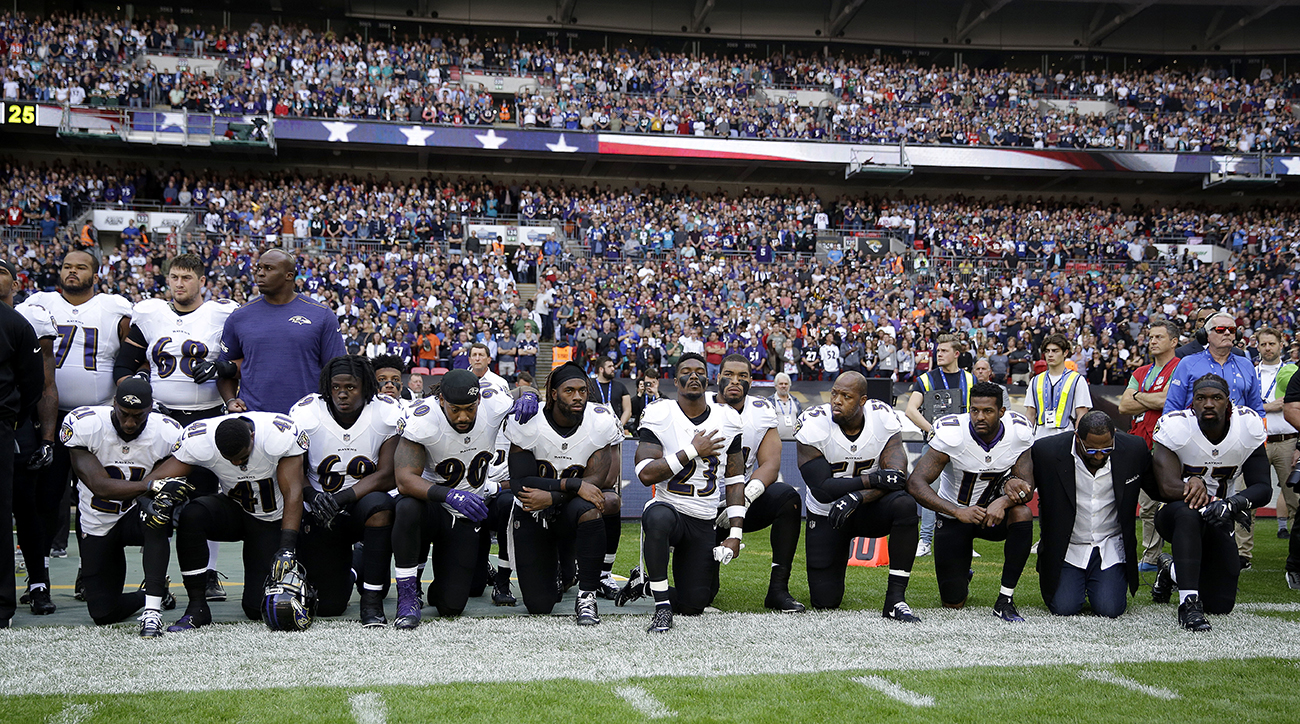
It’s broken. The Ravens are broken.
In a recent poll, here on RSR, 20% of fans say that they are done for good with the Ravens. Another 15% of PSL owners say they will not purchase their tickets next season despite the risk of losing their PSLs.
During the season-defining game against the Bengals, a playoff game for all intents and purposes, 40,000 showed up to watch. Yes, I get that it was cold. Yes, I get that it was New Year’s Eve and many had plans that evening. But fans of the Baltimore Ravens of old, would have figured it out. They would’ve been there in the cold and they would have adjusted their plans that evening.
Not this year.
NEXT SEASON
Today marks the 5th-year anniversary of the Mile High Miracle. It seems much longer ago than that, doesn’t it? Magical moments that resonate and become red-letter days in our city’s sports heritage – they leave you longing for more.
As a fan of the team, I don’t expect a Super Bowl season each year. But what I do expect is to have fun. 2017 wasn’t any fun. It wasn’t even in the neighborhood of fun.
Winning certainly makes things more enjoyable and that is probably the single-most important thing that the Ravens can do to cure fan frustration and stave off the dangers of apathy. Yet so far, they’ve done little to give any of us hope that 2018 will be any different.
Maybe a few exciting draft picks and a couple of splash free agent signings will help. But neither have been the norm for the Ravens in recent times and without them, fans will be forced to wait and see how things play out on the field.
A lot of apathy can set in between now and September.
Will time and space be good enough to lure back the fans that walked out or to keep the fence-sitters in?
Will the team show the fans some love before the fans show the team more money?
Doing nothing will result in more of Empty Bank Stadium.
And the fall of the empire will continue.
Maybe the Ravens brass knows this. And maybe that’s why they’ve taken so long scheduling their State of the Ravens presser. Maybe Bisciotti & Co. know they need to hit this presser out of the park.
A little transparency and humility could go a long way.
They really need to say the right things.
And Dick Cass announcing a ticket price increase isn’t one of them.

